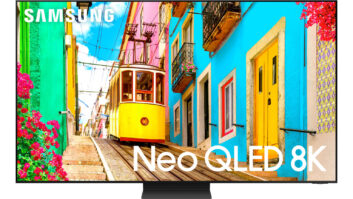In the past year, warehouse clubs have made significant gains in flat-panel TV sales using a balanced mix of brands and screen sizes tailored to their more affluent demographic, while mass retailers have focused primarily on third-tier brands and CE retailers pushed first-tier lines.
That was the observation of flat-panel retail distribution from Current Analysis West, an NPD Group company, during a conference call for investment banking concern CIBC World Markets.
Sales of display technology by distribution channel in the last year showed that LCD TV’s shelf share in the “mass retail” channel grew from 22 percent to 64 percent, including both 720p and 1080p, said Sang Tang, Current Analysis West HDTV analyst.
In the CE channel, shelf share grew from 25 percent to 41 percent, and in the warehouse club channel LCD shelf share grew from 21 percent to 41 percent, Tang said.
Models with 720p resolution have larger share at mass and warehouse-club channels, where pricing aligns with the low-price appeal of those channels, Tang said.
“Plasma continues to have healthy shelf share at warehouse clubs, despite LCD’s gains,” he added. “LCD’s gains have primarily hurt 720p RPTV sets at that channel.”
In screen-size assortment by retail channel, the tone was set for the CE retail chains by Best Buy and Circuit City, which had nearly identical screen size mixes, at 38.5 percent vs. 38.8 percent in 50-inch and larger, 33 percent vs. 33.8 percent below 40 inch, and 28.5 percent vs. 27.4 percent in 40 to 49 inches, respectively.
“The reason Tweeter has struggled is that they focused too much on 46-inch and above,” Tang said. “With 56 percent of their assortment at 50 inches and above, it was significantly higher than the rest of the channel.”
Among mass retailers, the most noticeable difference between the mass and CE channels was in the 50-inch and above space, where most mass retailers have not focused, instead emphasizing the 40- to 49-inch segment, Tang said.
“In 40 to 49 inches we think both Wal-Mart and Sears pose significant threats to the CE channel,” said Tang. “At 26.7 percent, Wal-Mart’s assortment at 40- to 49-inch is similar to the CE channel’s assortment, and Sears’ assortment [at 36.3 percent] is significantly higher than most CE retailers.”
Tang predicted that in the coming year, the mass retail channel will show bigger gains in 40- to 49-inch sets and slight declines in 50-inch and larger and 40-inch and smaller sets.
Target was an anomaly in the mass retail channel, with just 14.7 percent of its flat-panel business in the 40- to 49-inch segment, and the remaining 85.3 percent of the mix in less than 40 inches.
Despite publicly announced goals of becoming more of an electronics player, “Target hasn’t proved that it’s doing that,” said Sam Bhavnani, Currently Analysis West research director.
“None of [Target’s] mix was in the more profitable 50-inch and above segment, and it is lagging Wal-Mart in getting some of that more advanced technology out to market,” Bhavnani explained.
Among warehouse clubs, Current Analysis West cited Costco’s 40 percent mix of 50-inch and larger screen sizes and its 35 percent mix of sub-40 inch sizes as “standing out even from most CE retailers.”
Sam’s Club’s assortment was “fairly similar to the CE retailers,” Tang observed.
In shelf share by price, Current Analysis said the warehouse clubs are “best positioned, with incredible upside. Their strategy blends CE screen sizes with mass retailer prices, and we think that gives them really good positioning in the market.”
At 32.3 percent, the largest price segment for the warehouse channel falls in the $1,000 to $1,499 range, compared to 22.3 percent for mass and 17.4 percent for CE.
In a channel comparison of shelf-share assortment by brand tier, Current Analysis said there is “more brand parity” (a closer mix of tiers one and three) among warehouse clubs than the CE and mass channels, with “big brand disparity between tier-one and tier-three brands at CE and mass channels.”
“The result is a strategy that aligns really well with the higher-income demographic of the warehouse club shopper,” said Tang, “along with the low-price appeal of that shopper.”
In the CE channel, more than 50 percent of the assortment was in tier-one brands.
“Circuit City earlier this year emphasized that an over-assortment of 1080p sets contributed to their troubles, and we agree with that, and the brand gap is a lot larger at Circuit City than at Best Buy,” said Tang.
Among mass retailers, the emphasis was on tier-three brands with a big gap between tier one and tier three.
“There was a recent increase among their two brands, and we think this is going to have a minor impact on the channel. We think price conscious shoppers will ignore brands for price savings,” Tang said.
Tang added that the recent announcement that Sony would bring some Bravia LCD TVs to Wal-Mart will “pave the way for even more tier one offerings in the mass retail channel, but at the same time we think it will have a really minor impact on the channel. We think the bigger impact will be felt in the CE channel and will force them to focus even more in big-size 1080p offerings.”
The brand parity observed at warehouse clubs “contributed significantly to the warehouse clubs’ success,” said Tang.













